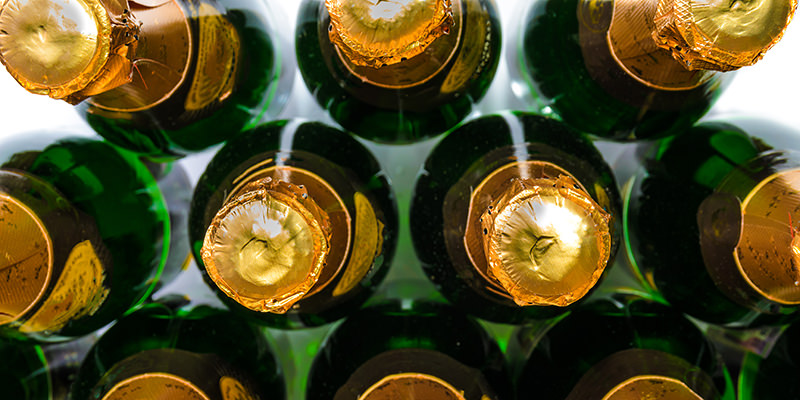Ah, the holiday season. A time for reflection. A time for family gatherings. A time to pretend you’re asleep when your Aunt Gloria asks you about your love life.
Gloria knows you’re awake, and very actively on Tinder. But that’s okay. Because for many of us, the holidays are basically a game of psychological dodge ball. One thing we can all do to arm ourselves: learn a little bit about the wine we’ll be drinking/serving/emotionally relying on.
If you’re lucky, that’ll involve some sparkling wine or Champagne. And if you want to distract family members from your recent bout of unemployment or that failed DJ-ing career (we’ve all tried it), the best word you can chuck out there: dosage (especially since it’s lavishly pronounced do-saaaaaajjje). Of course, then you gotta know what it is.
We got you covered, and fortunately, it’s all pretty simple. Essentially, dosage is some form of sweetness (sugar, or wine and sugar) added to a Champagne to balance it out. Grapes in the Champagne region have to struggle a bit to ripen (a good thing, and we’ll cover that soon), so they end up with less sugar to offer the wine, leaving many sparklings and Champagnes aggressively acidic. The dosage is a simple corrective measure, to either balance (nullify) too-intense acid or to actually impart some level of sweetness. And depending on the amount of dosage added, you’ll end up with a variety of sparklings, defined by terms that can be a bit confusing but are basically a scale from sweetest to driest:
Doux: 50 or more grams of sugar added per liter. This will taste outrageously sweet to most Champagne and sparkling wine palates—it’s about 2 teaspoons’ worth—but back in the day, Champagne tended to come a lot sweeter (folks even added sugar to their wine at dinner).
Demi-Sec: Dosed with 32 to 50 grams of sugar. Again, higher on the sweet sparkling spectrum than most of us are willing to go, but in 2012 at least it was making a bit of a comeback.
Sec: “Sec,” in French, means dry. But dry here actually indicates a medium-sweet sparkling. 17 to 32 grams of sugar, on average a teaspoon per liter.
Extra Sec: Literally “Extra Dry,” which would seem to indicate a lip-smackingly acidic wine but here means a bit less sweet than Sec, thanks to just 12 to 17 grams of sugar.
Brut: Up to 12 grams of sugar added, really for balance. Slightly rounder than “Extra Brut” because of the increased added sugar, and the type of sparkling or Champagne we tend to drink most.
Extra Brut: With fewer than 6 grams of sugar added, this is gonna come off higher-acid and accentuate the carbonation.
Brut Nature: No sugar added (or fewer than 3 grams), not common but a way for the winemaker to showcase the essential nature (hence the name) of the sparkling wine or Champagne. Higher notes of minerality and acid, basically a party in your mouth, and everyone’s invited. Except sugar.

